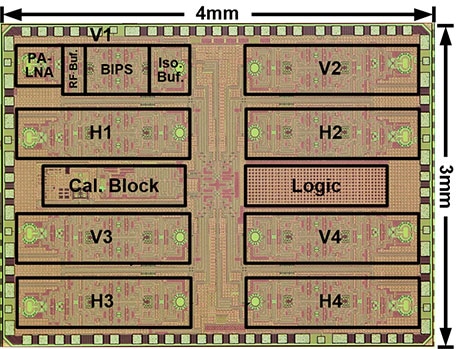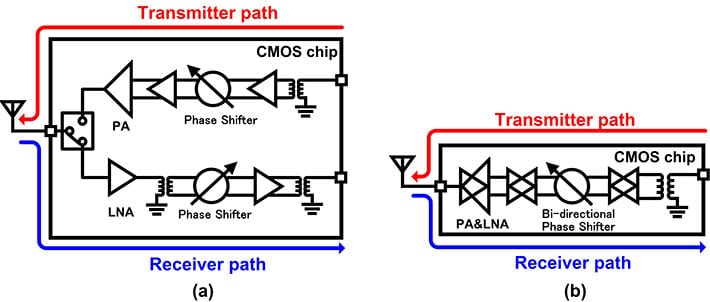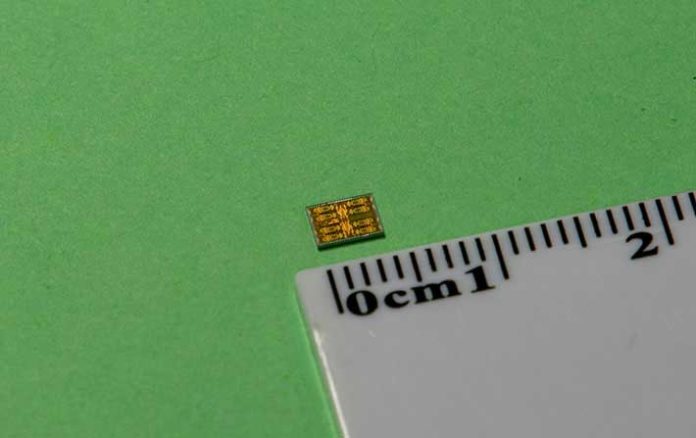In order to support high-speed mobile data access using the millimeter-wave spectrum for 5G, scientists at the Tokyo Tech have designed a 28 GHz transceiver that integrates beamforming1 with dual-polarized multiple-input and multiple-output (MIMO2) technology.
This 28- GHz transceiver consolidates beamforming, an exceptionally efficient signal processing strategy, with dual-polarized MIMO abilities. It means, its variety of antennas can react to both flat and vertical radio waves in the meantime.
During testing, it offered the data rate of 15 gigabits per second (Gb/s) in the 64-QAM format. This data rate is 25 percent higher than that achieved by previous comparable models.
Using minimal components, scientists designed a transceiver of size 3 mm by 4 mm, which is around half the size achieved to date. The smaller the chip, the better for 5G.

The transceiver consists of a total of four horizontal (H1–4) and four vertical (V1–4) array orientations.
Kenichi Okada at Tokyo Tech‘s Department of Electrical and Electronic Engineering said, “Compared with the conventional switch-based bi-directional approach, our bi-directional amplifier completely shares the inter-stage matching networks between the transceiver and the receiver. Thus, the required on-chip area is further minimized.”
The research was partially supported by SCOPE, an initiative led by Japan’s Ministry of Internal Affairs and Communications that focuses on promoting innovations in information and communication technologies.

Further details of the study are being presented as part of the 4G/5G Transceivers Session at the 2019 International Solid-State Circuits Conferenceouter (ISSCC) to be held in San Francisco from 17 to 21 February 2019.
